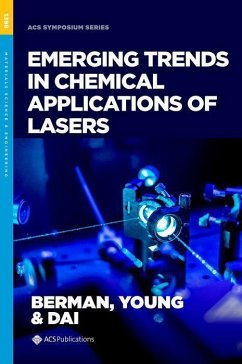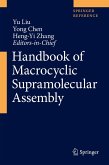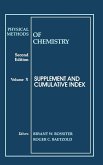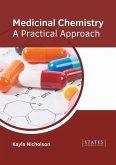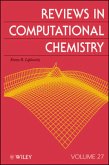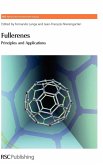Emerging Trends in Chemical Applications of Lasers
Herausgeber: Berman, Michael R.; Dai, Hai-Lung; Young, Linda
Emerging Trends in Chemical Applications of Lasers
Herausgeber: Berman, Michael R.; Dai, Hai-Lung; Young, Linda
- Gebundenes Buch
- Merkliste
- Auf die Merkliste
- Bewerten Bewerten
- Teilen
- Produkt teilen
- Produkterinnerung
- Produkterinnerung
The invention of the laser more than half a century ago has transformed many aspects of chemical research, and this work highlights how new developments of laser-based techniques for applications in chemical research continues to make significant impacts.
Andere Kunden interessierten sich auch für
![Handbook of Macrocyclic Supramolecular Assembly Handbook of Macrocyclic Supramolecular Assembly]() Handbook of Macrocyclic Supramolecular Assembly1.273,99 €
Handbook of Macrocyclic Supramolecular Assembly1.273,99 €![New Frontiers in Chemical Biology New Frontiers in Chemical Biology]() New Frontiers in Chemical Biology192,99 €
New Frontiers in Chemical Biology192,99 €![Physical Methods of Chemistry, Supplement and Cumulative Index Physical Methods of Chemistry, Supplement and Cumulative Index]() Physical Methods of Chemistry, Supplement and Cumulative Index722,99 €
Physical Methods of Chemistry, Supplement and Cumulative Index722,99 €![Medicinal Chemistry: A Practical Approach Medicinal Chemistry: A Practical Approach]() Medicinal Chemistry: A Practical Approach152,99 €
Medicinal Chemistry: A Practical Approach152,99 €![Active Site-Directed Enzyme Inhibitors Active Site-Directed Enzyme Inhibitors]() Weiping ZhengActive Site-Directed Enzyme Inhibitors181,99 €
Weiping ZhengActive Site-Directed Enzyme Inhibitors181,99 €![Reviews in Computational Chemistry, Volume 27 Reviews in Computational Chemistry, Volume 27]() Reviews in Computational Chemistry, Volume 27273,99 €
Reviews in Computational Chemistry, Volume 27273,99 €![Fullerenes: Principles and Applications Fullerenes: Principles and Applications]() Fullerenes: Principles and Applications192,99 €
Fullerenes: Principles and Applications192,99 €-
-
-
The invention of the laser more than half a century ago has transformed many aspects of chemical research, and this work highlights how new developments of laser-based techniques for applications in chemical research continues to make significant impacts.
Produktdetails
- Produktdetails
- ACS Symposium
- Verlag: Oxford University Press, USA
- Seitenzahl: 460
- Erscheinungstermin: 16. September 2022
- Englisch
- Abmessung: 256mm x 182mm x 30mm
- Gewicht: 1048g
- ISBN-13: 9780841298040
- ISBN-10: 0841298041
- Artikelnr.: 65692817
- ACS Symposium
- Verlag: Oxford University Press, USA
- Seitenzahl: 460
- Erscheinungstermin: 16. September 2022
- Englisch
- Abmessung: 256mm x 182mm x 30mm
- Gewicht: 1048g
- ISBN-13: 9780841298040
- ISBN-10: 0841298041
- Artikelnr.: 65692817
Dr. Michael R. Berman is a program officer at the Air Force Office of Scientific Research where for 30 years he has managed a cutting-edge basic research program in the chemical sciences with an emphasis on mechanisms of chemical reactivity and energy transfer. He has been individually responsible for investments of over $500M in chemistry programs, while shaping some of the directions of research in the physical, inorganic, and theoretical chemistry communities. This program has produced pioneering new development in chemistry in fields as diverse as molecular and ionic clusters, applications of plasmonics to chemistry, catalysis, ionic liquids, microdroplet chemistry, atomic layer deposition, superatom chemistry, multidimensional spectroscopy, and new methods in electronic structure calculations. Dr. Berman first worked on emerging applications of lasers to chemistry as an undergraduate with Phil Johnson at Stony Brook University doing some of the first experiments in multiphoton ionization spectroscopy of molecules, and demonstrating early uses of lasers in analytical chemistry with Dick Zare, then at Columbia University. Dr. Berman obtained his Ph.D. at the University of California, Berkeley with C. B.Moore, and did postdoctoral work at the Naval Research Laboratory with M. C. Lin. He worked at McDonnell Douglas Research Laboratories and served as an adjunct professor at University of Missouri - St. Louis before joining AFOSR. Dr. Berman has served three terms as an ACS Councilor (2006-2014), representing the Physical Division. He has also been an active member of the ACS Committee on Science and sits on the National Academy of Sciences Chemical Sciences Roundtable. He has been elected a fellow of the American Chemical Society, American Physical Society, American Association for the Advancement of Science, and the Air Force Research Laboratory, and has received the Arthur S. Flemming Award and the Air Force John L. McLucas Basic Research Award. Dr. Linda Young, Distinguished Fellow at Argonne National Laboratory and Professor (parttime) in the Department of Physics and James Franck Institute at the University of Chicago, obtained her Ph.D. at the University of California, Berkeley with C. B. Moore, did her postdoctoral studies with D. H. Levy at the University of Chicago and joined the Physics Division at Argonne National Laboratory in 1983. She has almost 200 publications and has been honored as a fellow of the American Physical Society, Distinguished Travelling Lecturer for the Division of Laser Science, a speaker at the Nobel Symposium on Free Electron Laser Research and with a Helmholtz International Fellowship. She served previously as the Director of the X-ray Science Division of the Advanced Photon Source, Chair of the Division of Atomic, Molecular and Optical Physics and on many national and international Science Advisory Boards, including DESY, European XFEL, Helmholtz Zentrum Berlin and Paul Scherrer Institute. She currently leads the atomic, molecular and optical physics group at Argonne National Laboratory which specializes in research in ultrafast and ultraintense X-ray sciences. Contributions include understanding the mechanism of ultraintense X-ray interactions with matter, developing X-ray pump/X-ray probe methodologies and observing the fastest chemical processes in the radiolysis of liquid water. Earlier research contributions include precision spectroscopy for parity violation experiments, development of atom trap trace analysis for groundwater dating and development of polarized targets for nuclear physics. Hai-Lung Dai received his BS from National Taiwan University and PhD (advisor C. B. Moore) From UCBerkeley and did postdoctoral research (with Robert Field and James Kinsey) at MIT. From 1984 to 2006 at the University of Pennsylvania he served as the Hirschmann-Makineni Professor, Chair of the Chemistry Department, and the founding Director of the Penn Science Teacher Institute. In 2007 he moved to Temple University as Laura H. Carnell Professor and served as Dean of the College of Science and Technology and Provost and is now the Vice President for International Affairs. Dai has published more than 200 papers in fields of molecular spectroscopy and dynamics, surface and colloidal sciences, and biophysics. His laboratory develops new laser-based spectroscopic and microscopic methods for studying topics such as energy transfer of highly excited molecules, reactions at nanoparticle surfaces, and transport at living cell membranes. The academic honors he has received include the Coblentz Award in Spectroscopy, the Ellis Lippincott Award in Molecular Spectroscopy (Optical Society of America and Society of Applied Spectroscopy), the Langmuir Lecturer Award from the Division of Surface and Colloidal Science of the American Chemical Society, a Humboldt Fellowship for Senior US Scientist from Germany, and the Morino Lectureship in Japan. He is a fellow of the American Physical Society and the American Chemical Society. His other honors include the Knight of the Order of the Italian Star from the Government of Italy, the Michael P. Malone International Leadership Award from the Association of Public and Land Grant Universities, and a Distinguished Alumi Award from National Taiwan University. In 2019, the Journal of Physical Chemistry published a Festschrift in honor of his 65th birth year.
